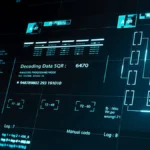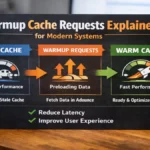In the rapidly advancing world of vehicle electronics, one crucial yet often overlooked component is the Powertrain Interface Module, widely referred to as the PIM. Designed as the central communication hub between a vehicle’s powertrain systems and its onboard electronic network, the PIM plays a pivotal role in ensuring smooth performance, fuel efficiency, and system stability. When a driver presses the accelerator, shifts gears, or engages cruise control, the PIM coordinates precise electrical signals that allow multiple systems to work together in real time. Without a properly functioning PIM, the vehicle may experience communication breakdowns between the engine control module, transmission, sensors, and actuators, resulting in reduced drivability, dashboard errors, or even total system shutdown. This article explores everything a reader or automotive engineer needs to know about the Powertrain Interface Module, including how it works, why it matters, where it fits in a vehicle, and how modern automotive systems rely heavily on its performance for safety, diagnostics, and power delivery.
What is a Powertrain Interface Module?
A Powertrain Interface Module is an electronic gateway that manages communications between the powertrain components of a vehicle and the broader control network. To put it simply, it acts like a translator and conductor, passing signals between components such as the Engine Control Unit (ECU), Transmission Control Module (TCM), throttle sensors, and other integrated control units. The PIM maintains synchronization so all components function according to driver input and vehicle conditions.
Automakers rely on PIMs in cars, trucks, SUVs, and even heavy-duty commercial vehicles due to their ability to manage high-speed data transfer. These modules often contain microprocessors, voltage regulators, embedded firmware, and CAN bus communication ports. In modern cars, the PIM doesn’t just send information: it filters noise, validates voltage integrity, and implements safety protocols to prevent damaging surges or false signals. As vehicles evolve with electrification and smart systems, the PIM has become even more critical for integrating hybrid batteries, electric drive motors, and regenerative braking systems into existing architectures.
Purpose and Core Functions of the PIM
The Powertrain Interface Module has multiple intelligent functions embedded in its circuitry. First, it establishes and manages secure communication pathways between powertrain modules using protocols like CAN (Controller Area Network) or LIN (Local Interconnect Network). These communication pathways allow real-time data exchange between systems such as engine timing, fuel injection, torque management, shift patterns, and traction control. Without this coordination, vehicles would lose efficiency during acceleration or gear changes.
Second, the PIM acts as an electrical signal conditioner. It converts raw sensor signals into calibrated data that can be interpreted by the ECU or TCM, stabilizing signal voltage so that engine performance calculations remain accurate. For instance, signals from the crankshaft position sensor and throttle position sensor often pass through the PIM before reaching the engine controller.
Third, PIMs also regulate power distribution to high-priority components. When electrical demand spikes, the module ensures the engine and transmission maintain power over secondary systems like entertainment units. As one engineer famously said, “A vehicle with no PIM is like a body without a nervous system—signals exist, but nothing connects.”
Key Components and Architecture of a PIM
Every Powertrain Interface Module combines hardware and software in a compact control unit. The hardware usually includes microcontrollers, communication transceivers, signal converters, insulated wiring connectors, and protective casings designed to withstand temperature extremes and engine vibrations. Software elements include firmware programming with decision logic and built-in diagnostic test routines.
The architecture below captures core elements:
| Component | Function |
|---|---|
| Microcontroller | Processes signal logic and communication management |
| CAN/LIN Transceivers | Enable network-level communication with ECU and TCM |
| Voltage Regulators | Maintain stable operating power |
| Input/Output Ports | Accept signals from sensors and actuators |
| Firmware | Executes control logic and network protocols |
| Shielded Housing | Protects internal electronics from thermal damage |
This combination ensures the PIM is durable, compact, serviceable, and compatible with various OEM standards. Its engineering layout allows placement under dashboards, behind fuse panels, or near transmission housings depending on model design.
How the Powertrain Interface Module Works in Real Time
The Powertrain Interface Module receives data packets from sensors in milliseconds, interprets them, and routes commands instantly. Consider when a driver accelerates on the highway. The throttle position sensor sends a voltage signal indicating pedal pressure. The PIM receives that signal and relays it to the ECU, which adjusts fuel injection timing. Simultaneously, the transmission controller receives torque load data from the ECU through the PIM to determine optimal gear selection. This chain completes faster than the human eye can blink.
The PIM handles three types of tasks during this process: data processing, signal prioritization, and safety validation. Signal prioritization is critical because the PIM filters unnecessary background signals to reduce data traffic and delays. Meanwhile, safety validation ensures no single system sends false readings due to interference, wiring faults, or sensor drift. This is why a failing PIM often triggers multiple dashboard warnings—it affects communication across the powertrain.
Signals Managed by the PIM
The Powertrain Interface Module handles various types of electrical communication signals. These fall into categories defined by their role:
| Signal Type | Purpose |
|---|---|
| Sensor Input Signals | Collect real-time vehicle data |
| Command Signals | Execute control actions (fuel trim, gear shift) |
| Power Control Signals | Regulate voltage to powertrain systems |
| Diagnostic Signals | Send error codes to onboard diagnostic system |
| Safety Signals | Coordinate fail-safe procedures |
These signal types allow the PIM to operate as part of a secure vehicle communication ecosystem. For example, during sudden braking, the PIM receives ABS signals and relays torque reduction commands to the ECU to prevent wheel lock. In hybrid vehicles, it mediates communication between ICE engines and electric motors when switching drive modes.
Role of PIM in Vehicle Safety and Diagnostics
Modern vehicles include built-in safety layers and diagnostics, and the PIM plays a central role in coordinating these systems. If a critical malfunction occurs—such as overheating, fuel delivery failure, or transmission slip—the PIM activates limp mode. Limp mode limits engine speed and disables aggressive gear shifting to prevent mechanical failure or fire risk. Without the PIM, such preventive responses would be delayed or absent.
The module also logs Diagnostic Trouble Codes (DTCs) that technicians access with OBD-II scanners. Codes involving U-codes (such as U0101 or U0140) often indicate lost communication with the transmission or body control modules due to a PIM issue. According to automotive service specialists, “Around 40% of U-code diagnosis results trace back to gateway or PIM faults—not defective sensors.” This highlights the diagnostic importance of this single module.
Applications in Electric and Hybrid Vehicles
In electric and hybrid vehicle platforms, the Powertrain Interface Module does far more than route signals. It orchestrates the communication between internal combustion components and high-voltage battery systems. For instance, during regenerative braking, the PIM coordinates energy transfer from the wheels back to the battery pack, ensuring voltage regulation and preventing thermal overload. It also synchronizes inverter signals and cooling system communication to protect electric motors.
Because hybrid vehicles operate in multiple modes—electric-only, combustion-only, or combined—the PIM ensures seamless transitions. It communicates state-of-charge data between the battery management system (BMS) and power inverters to maintain optimal efficiency. In EVs, the PIM also integrates charger communication protocols and thermal safety circuits for rapid charging applications.
Common Symptoms of a Faulty Powertrain Interface Module
While built for durability, PIMs can fail due to thermal fatigue, internal corrosion, moisture intrusion, or software corruption. When the module begins failing, symptoms may appear gradually before escalating. Common warning signs include:
- Erratic transmission shifting or gear hesitation
- Engine stalling or limp mode activation
- Dashboard warning lights triggered simultaneously
- Loss of communication with ECU or TCM
- Reduced fuel efficiency and performance decline
- Multiple CAN bus communication faults
- Failure to start due to power signal errors
Since failures often mimic sensor or wiring issues, incorrect diagnosis is common. Many drivers spend money on crankshaft sensors, throttle bodies, or ignition coils without realizing the root cause is a deteriorating PIM.
Causes of PIM Failure
Understanding the causes of PIM failure helps owners prevent expensive replacements. Environmental exposure is a major culprit. Modules exposed to engine bay heat cycles may develop microfractures in solder joints, leading to intermittent signal disruptions. Water leaks near windshield drain channels can drip onto cabin-mounted PIMs, causing corrosion. Voltage surges from alternator spikes or jump-start errors can fry sensitive microchips.
Aging wiring harnesses also create resistance buildup, forcing the PIM to work harder to interpret distorted signals. Software errors or firmware damage may occur during ECU reflashing or battery replacement if proper reprogramming procedures are skipped. In some vehicles, physical impact from collisions can dislocate PIM connectors, cutting off network access entirely.
Diagnostic Process for PIM Issues
Proper diagnosis begins with eliminating simple causes before replacing the module. Qualified mechanics use OBD-II scanners to detect communication faults and measure CAN bus activity. A healthy PIM will show stable voltage and communication signals across network nodes. Oscilloscope tests are used to inspect data stream validity.
Troubleshooting steps include:
- Scan for U-series communication codes
- Inspect wiring harness continuity
- Test module ground and power supply integrity
- Check CAN bus resistance (should read ~60 ohms)
- Perform PIM-to-ECU network tests
- Inspect for water corrosion or burned circuits
- Reflash firmware (if applicable)
- Replace module only after confirming failure
Many automakers now provide “gateway reset procedures” to recalibrate PIMs after repair. Skipping this step may result in persistent dashboard warnings.
Repair vs Replacement: What to Do?
If diagnostics confirm failure, technicians evaluate repair or replacement. In some cases, damaged PIMs can be reconditioned by specialists, especially when failures involve broken solder joints or burnt capacitors. However, reconditioned modules must be coded to match each vehicle’s VIN for security reasons.
Replacement PIMs may be sourced from OEM dealers or certified aftermarket suppliers. They require programming using factory scan tools to align communication protocols. Installation costs range widely depending on vehicle make and labor difficulty. Some luxury vehicles mount the PIM deep within the dashboard, increasing disassembly time.
Choosing between repair and replacement depends on budget, vehicle age, and software compatibility. Repair is cost-effective but risky if the module has deep internal damage. Replacement ensures long-term stability but is more expensive.
Table: PIM Repair vs Replacement Cost Comparison
| Option | Typical Cost Range | Pros | Cons |
|---|---|---|---|
| Repair | $120 – $350 | Lower cost, retains OEM hardware | Not always reliable |
| Replacement | $350 – $1,200 | Long-term reliability | Requires programming |
| Reflash Firmware | $80 – $200 | Fixes software errors | Not helpful for hardware failure |
Future of Powertrain Interface Modules
As software-defined vehicles and connected platforms emerge, PIMs are evolving. Next-generation models act as cybersecurity gateways, protecting vehicle networks from hacking attempts. They include encryption modules and firewall code designed to block unauthorized access from diagnostic ports or wireless connections.
Artificial intelligence will soon influence PIM behavior. Adaptive learning firmware will analyze driving behavior and component load patterns to optimize engine torque maps dynamically. Over-the-air (OTA) updates will replace traditional reprogramming methods, minimizing workshop visits. In electric autonomous fleets, PIMs will handle routing of data between powertrain and central AI driving computers.
Many automakers plan to merge PIM functions into centralized vehicle computers known as “domain controllers.” These integrate engine, body, chassis, and infotainment networks into one intelligent gateway, reducing wiring complexity and weight.
Importance of PIM in Fleet Vehicles and Motorsports
Fleet operators rely on PIM data to monitor vehicle health remotely. Fleet telematics platforms extract powertrain data via the PIM to detect early signs of failure and schedule predictive maintenance. This reduces operational downtime and improves safety.
In motorsports, engineers tune PIM parameters to improve track performance. Race vehicles use modified gateway maps to speed up network communication and improve throttle response under extreme loads. Custom PIM firmware allows launch control, torque vectoring, and dynamic shift profiles that shaved seconds off lap times. In this high-stakes environment, PIM precision determines competitiveness.
Environmental Impact and Sustainability Considerations
As industries move toward sustainability, PIMs help vehicles reduce fuel consumption by coordinating efficient torque delivery and shifting. Hybrid vehicles using optimized PIM strategies can cut CO2 emissions by up to 20%. Additionally, modern PIMs minimize electrical waste by smartly managing energy distribution.
Recycling damaged PIMs is now more common due to environmental regulations. Electronics recyclers safely recover copper, gold, aluminum, and silicon components from PIM boards. Refurbishing PIMs also reduces e-waste and supports circular economy initiatives.
Conclusion
The Powertrain Interface Module is more than a communication gateway; it is the silent architect behind every smooth acceleration, precise gear shift, and safe engine shutdown. Vehicles today rely on digital orchestration more than mechanical synergy, and the PIM stands at the core of that evolution. From enhancing fuel efficiency to enabling electric powertrains, this intelligent module shapes the future of mobility. As automotive technology advances toward autonomous driving, the PIM will only grow in complexity and engineering importance. In the words of one automotive engineer, “Powertrain intelligence begins not with horsepower, but with signal integrity—and that starts with the PIM.” Understanding its function empowers vehicle owners and technicians to make better decisions about diagnostics, upgrades, and maintenance in a smart automotive era.
Frequently Asked Questions
1. Where is the Powertrain Interface Module located in a vehicle?
The location varies by model. In many cars, it is installed behind the dashboard near the fuse box, under the steering column, or inside the engine bay mounted near the battery. Truck platforms sometimes mount the PIM close to transmission housings. Consult vehicle-specific diagrams to locate it accurately.
2. Can I drive with a faulty Powertrain Interface Module?
Driving with a failing PIM is risky. Communication failures can lead to stalled engines, gear lock, or loss of throttle response. While the car may start, it may enter limp mode or shut off unexpectedly, posing a safety hazard.
3. Does the PIM need programming after replacement?
Yes. Almost all new PIMs require VIN coding and firmware programming using factory diagnostic tools. Without programming, the vehicle may not start or may show persistent warning messages.
4. What are common PIM-related error codes?
Typical trouble codes include U0100 (Lost communication with ECM), U0101 (Lost communication with TCM), and U0140 (Lost communication with Body Control Module). These indicate gateway failures commonly linked to PIM malfunction.
5. Can software updates fix PIM problems?
If the issue is firmware corruption or compatibility errors, a software reflash may solve the problem. However, hardware issues like burned circuits or connector corrosion require repair or replacement.











